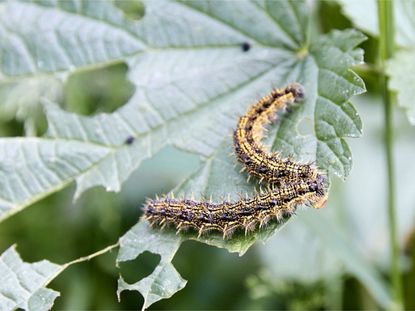Cannibalistic Caterpillars: Why Caterpillars Eat Each Other


While cannibalism is rare among the human species, it is fairly common in the animal and insect kingdom. Until fairly recently accounts such as female praying mantis eating their mates was considered to be a one off, but newer scientific research shows evidence of caterpillar cannibalism.
Why do caterpillars eat each other? Likely it’s the same reason most human cannibalism has occurred: survival. In a roundabout way, cannibalistic caterpillars exist because of the survival instinct... but it isn’t because they lack food. Keep reading to learn about the fascinating life of a cannibal caterpillar.
Do Caterpillars Eat Other Caterpillars?
Yes, it’s true. Caterpillars have indeed been observed feeding on each other. But the question is... why? This behavior has been observed even when there is plenty of food around for the otherwise vegetarian caterpillars to feed on.
Why Do Caterpillars Eat Each Other?
So what on earth could be going on here? The behavior has been seen in the order Lepidoptera, an insect family that includes butterflies and moths. Scientists have noted cannibalism in caterpillars on milkweed, the staple food plant for Monarch butterflies, and also on tomato plants.
Cannibalism in the animal and insect world usually exists because of a lack of food resources. The eater sees their familial prey as a perfect food source that will guarantee their survival, at least for a time, especially if the host plant has become unpalatable or inedible.
Favorable Toxins
In the cases of cannibalism mentioned above, caterpillars that feed on milkweed or tomato plants have the same outcome but use two different methods. On milkweed, milkweed butterflies have been observed using their sharp “tarsal” claws to scratch the soft bodies of caterpillars, including those of their own species. In this case, cannibalism isn’t due to a lack of food.
The reason still boils down to survival. Monarch caterpillars for instance, eat toxic milkweed. They then sequester the toxin, cardiac glycoside. This toxin can then be passed onto birds or other animals that try to eat them, resulting in vomiting. The animal will eventually pass up the Monarchs in favor of a more palatable snack.
Gardening tips, videos, info and more delivered right to your inbox!
Sign up for the Gardening Know How newsletter today and receive a free download of our most popular eBook "How to Grow Delicious Tomatoes."
But male Monarch butterflies also use this toxin to produce mating hormones. Getting more of that toxin is going to boost their chances of mating successfully. And what's a readily available source of that toxin? That's right—the caterpillars eating the milkweed, the larvae of their own species.
Unpalatable Flavors
You may think plants are at the mercy of insect pests, but some, such as tomatoes, are able to fight back. These plants can marshal defenses by producing chemicals, like one called methyl jasmonate.
This chemical can make the plant taste so unpalatable that the insects, in this case caterpillars, end up resorting to cannibalism to sate their hunger. If that wasn’t enough, plants near the chemically defended plant will detect the shift and begin producing their own chemicals.
Tomato plants aren’t the only plants that have this type of defense system. Cowpeas can detect when caterpillars are munching on their foliage, signaling the plant to produce ethylene which, in turn, repels the beet armyworm.
This is a fascinating way for plants to protect themselves while at the same time creating an army of insect cannibals. As the insects eat each other, there are less and less of them to use the plant as a food source—a win/win for the plant.

Amy Grant has been gardening for 30 years and writing for 15. A professional chef and caterer, Amy's area of expertise is culinary gardening.